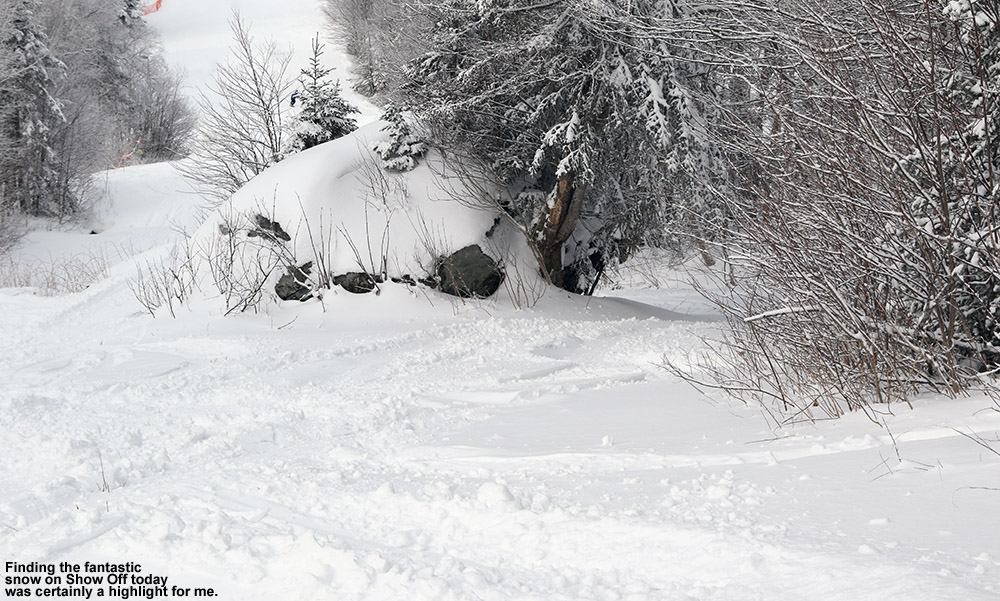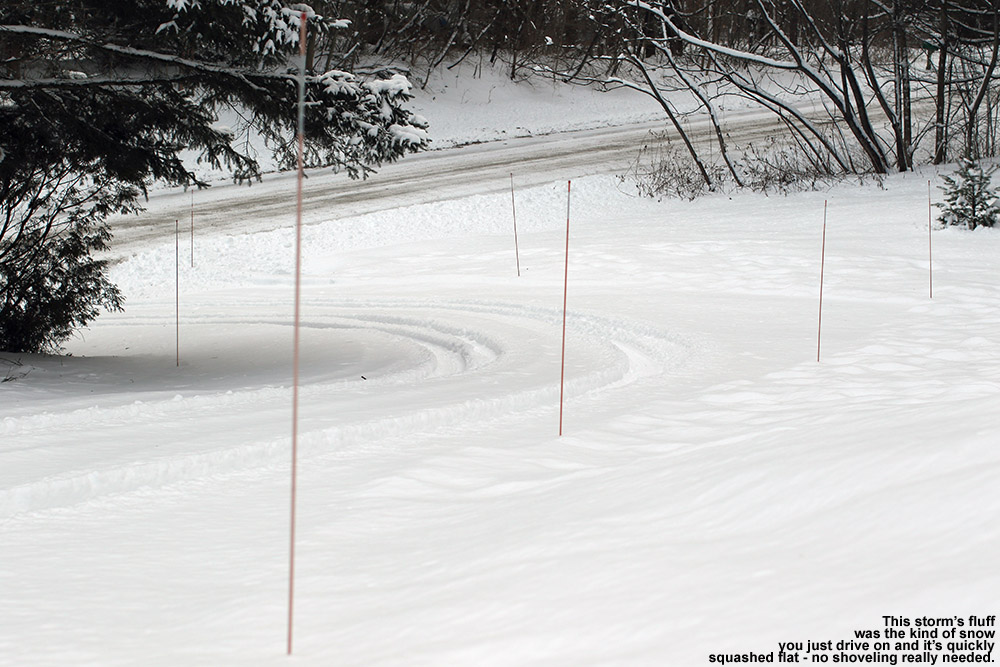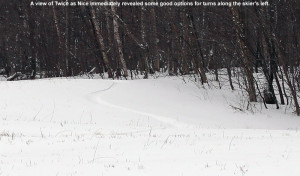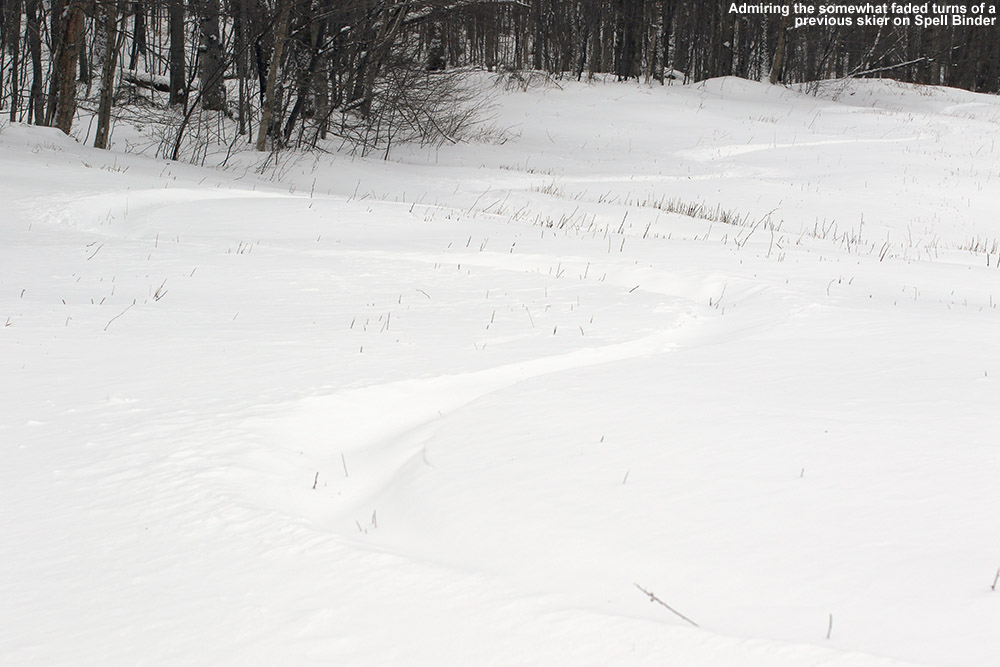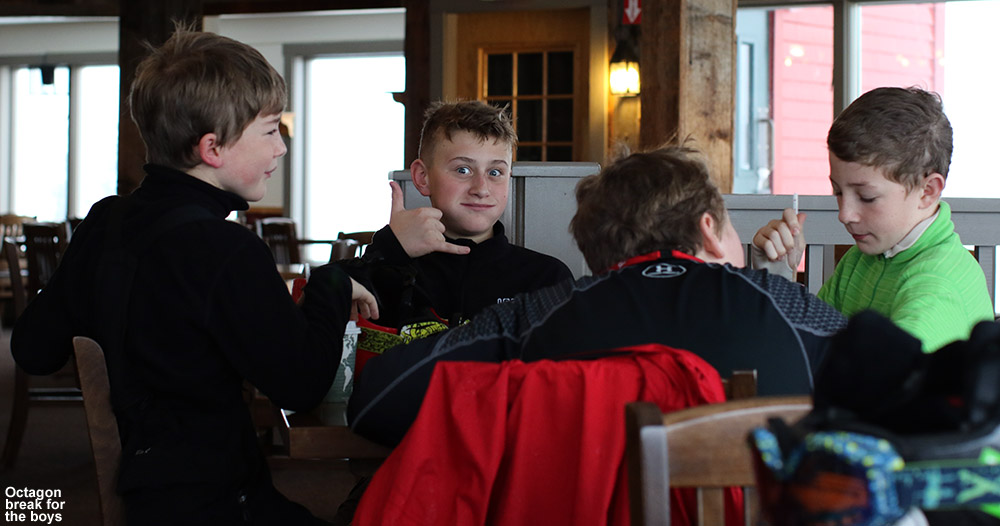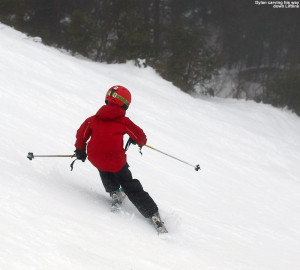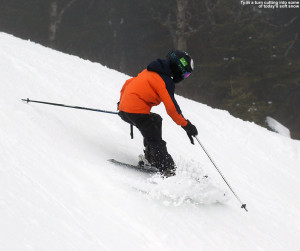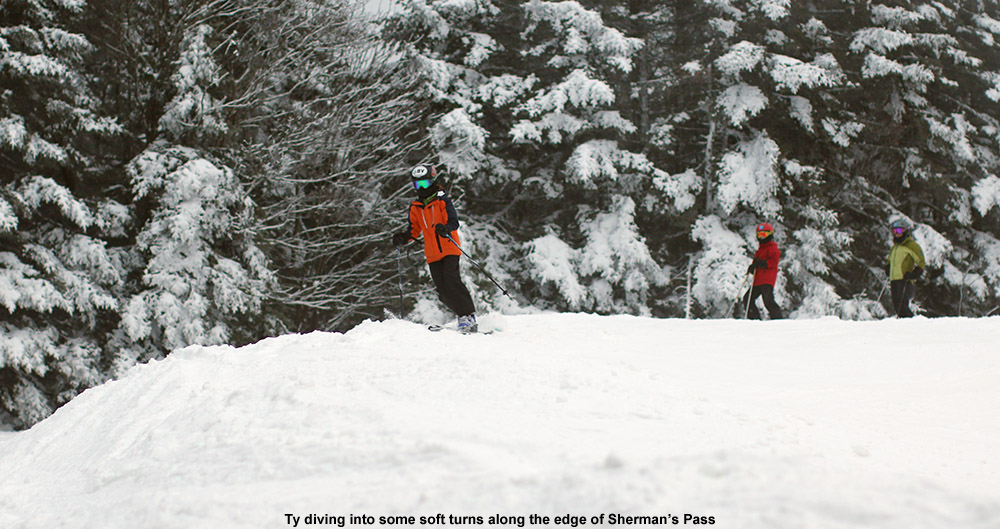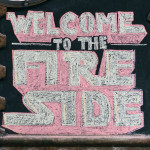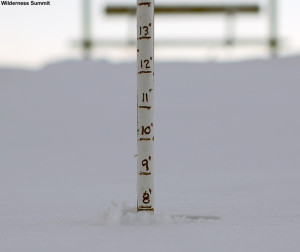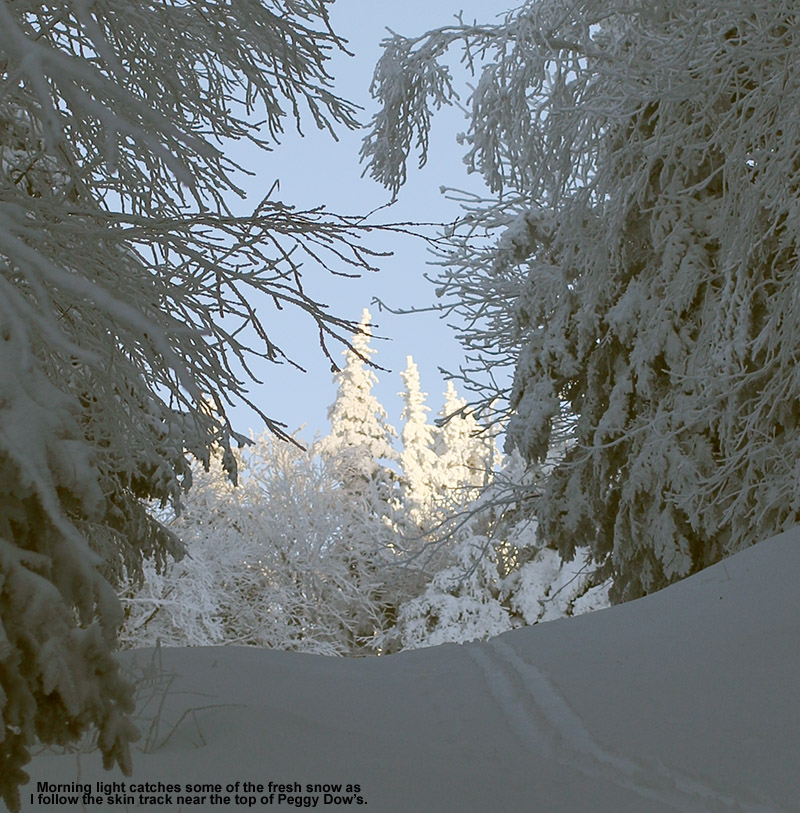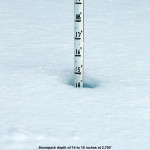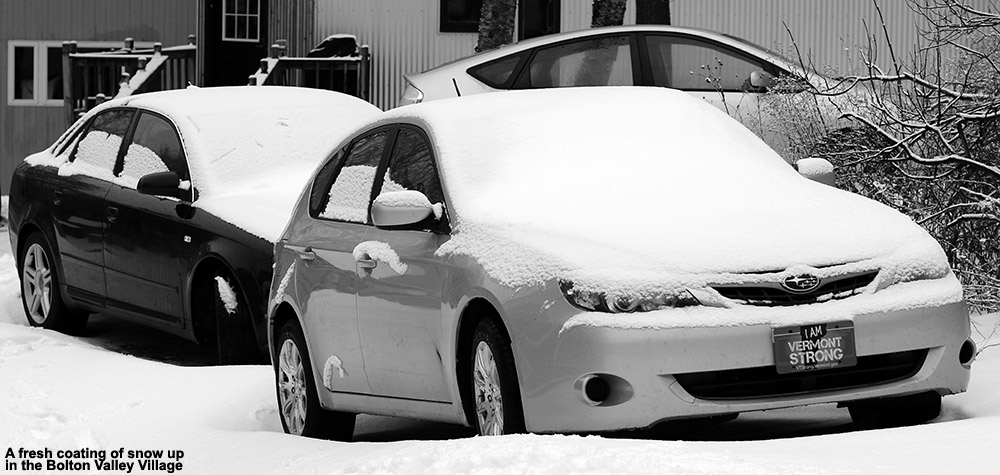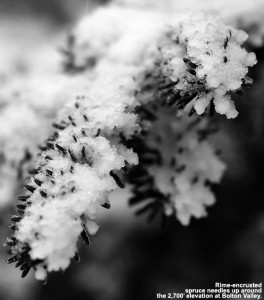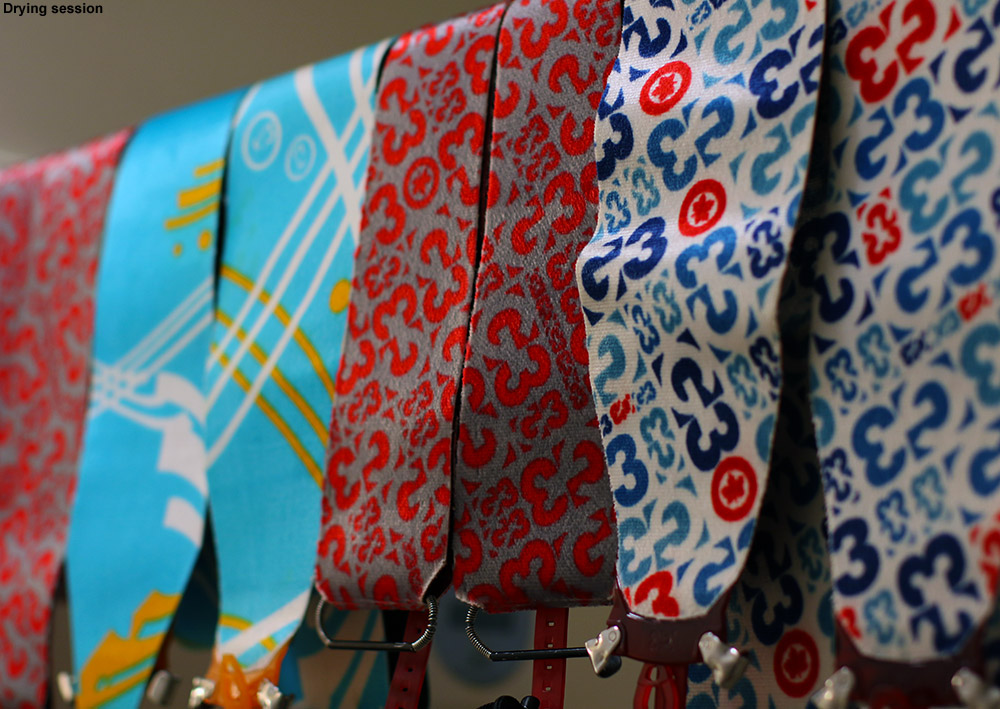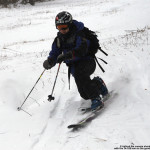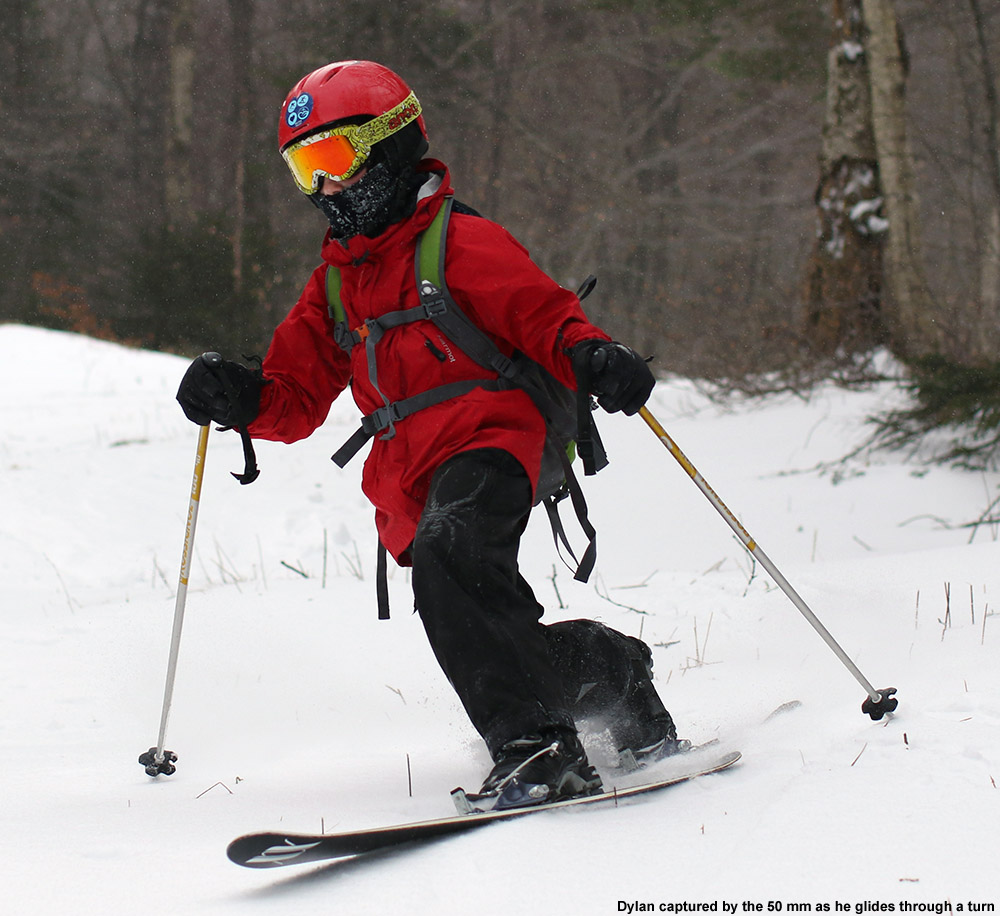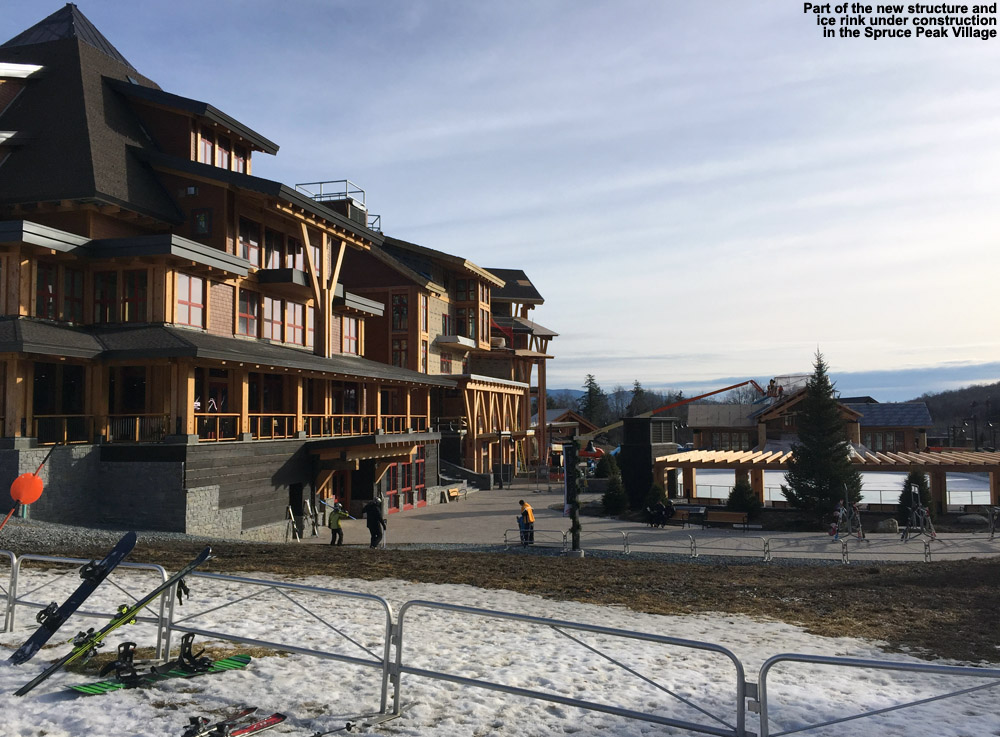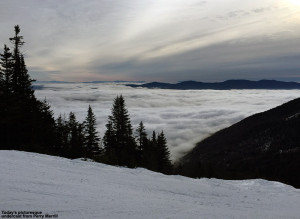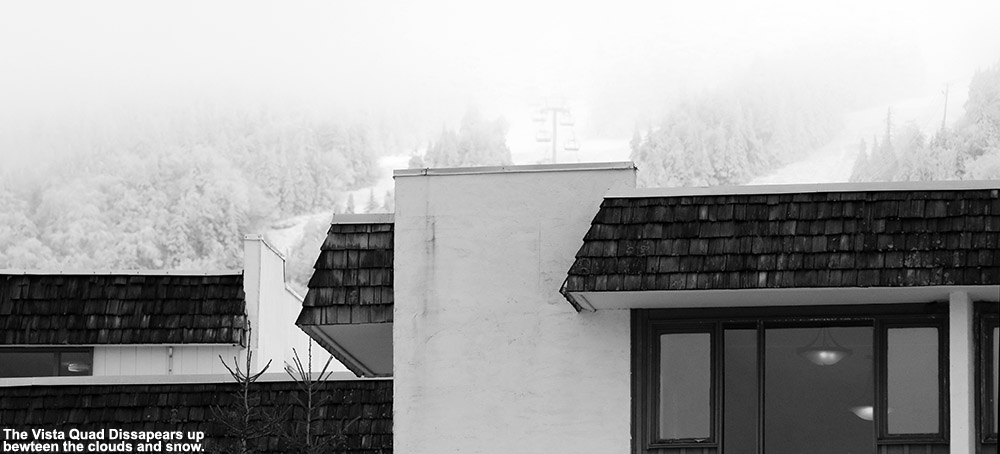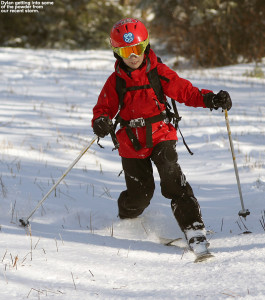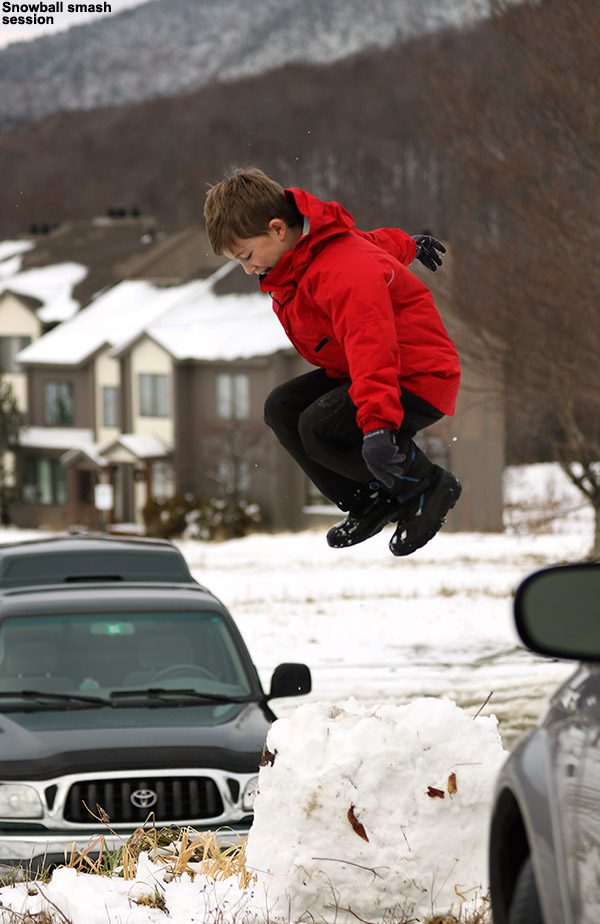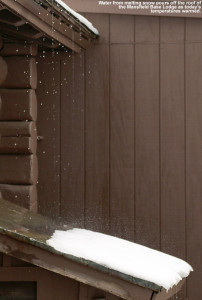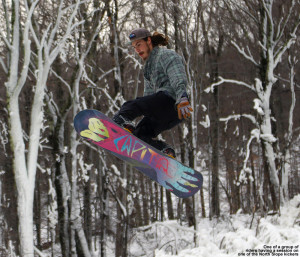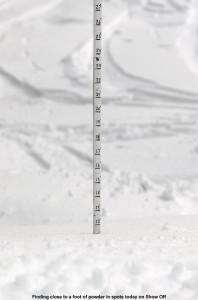
Yesterday we picked up a quick inch of snow at the house, but I was surprised to find out that Bolton Valley had received up to 4 inches out of the deal. It was fairly dense snow as well, and combined with more snow from a couple of days ago, that gave them 8 inches in the past 72 hours. I know we haven’t had quite a large enough storm for a real resurfacing of the slopes, and it is a holiday weekend with higher than usual skier traffic levels, but that snow was enough to inspire me to head out for at least a couple of runs today.
It was a real nice winter day to be out in any case, temperatures were comfortably around 30 F as I approached the Bolton Valley Village at 2,100’. Holiday visitors were in full effect, which was great to see for the resort. The upper parking lots in the Village were just about full, but I was able to grab a spot one tier from the bottom thanks to someone who had left. Wilderness and Timberline aren’t yet in operation this season, but the remaining lifts were doing a decent job of supporting the holiday traffic. Even the line at Vista wasn’t past the corral ropes, and it was probably 5 minutes or so of a wait for the quad queues. I hopped in the singles queue since I was solo, and that was just a couple of minutes.

Being solo, I rode with other parties and got to hear their conversations, and everyone seemed happy with the conditions. Steeper trails with manmade snow had the usual sort of firm surfaces you’d expect without a decent resurfacing in a while, but it was well up above where things would be post-thaw thanks to the recent snows. There are some new additions to the trail lineup, with Hard Luck available thanks to manmade snow. I headed right there on my first run, and the middle 80% was pretty much the slick sort of surface you’d expect from snowmaking and traffic on a steep slope, but the sides held plenty of loose snow, both from the natural over the past few days and whatever skiers had pushed there. Unfortunately, there were still some large chunks leftover from snowmaking, grooming, or whatever, and they weren’t ice, but they were pretty firm and really marred what would otherwise be some excellent conditions on the sides.
“That was where I really hit gold. There had been no snowmaking to deteriorate the natural snow, and there was a substantial base with generally 7 to 8 inches of powder on top. In some places there was as much as a foot of loose snow.”
I picked my way down the first half of Hard Luck along the edge, and then dove into the Hard Luck trees to find ample base and another 8+ inches of powder atop that. The total snowpack depth in there is still just shy of 18 inches, so it’s not quite game on, but you could hit some of the cleaner lines if you wanted to, and people had certainly been doing that. My plan was actually to continue on through to Show Off, since it was open below the Hard Luck crossover, and it looked really good from the lift. That was where I really hit gold. There had been no snowmaking to deteriorate the natural snow, and there was a substantial base with generally 7 to 8 inches of powder on top. In some places there was as much as a foot of loose snow. Few skiers had actually been though there, so there was plenty of powder turns left of the taking. It was so good that I immediately hit it again on my next run, that time starting from the very top Hard Luck connection that was open. The resort has unfortunately left some higher brush on Show Off so that limited a few lines, but those should be available with another foot or two of snow.
On the lower mountain I made my way over to Snowflake to check out how those trails were doing, but the trails to the south of the lift were roped off, so that left Butterscotch as the main route. Skier’s right of Butterscotch held some decent snow, but there was still some contamination from manmade snow, and the powder wasn’t as deep as higher on the mountain so it couldn’t quite compare. I also checked out Glades on the lower mountain, which has opened on natural snow. It’s seen a lot of traffic, so even it has firm surfaces in the middle, and something similar to Butterscotch along the sides without any manmade snow.
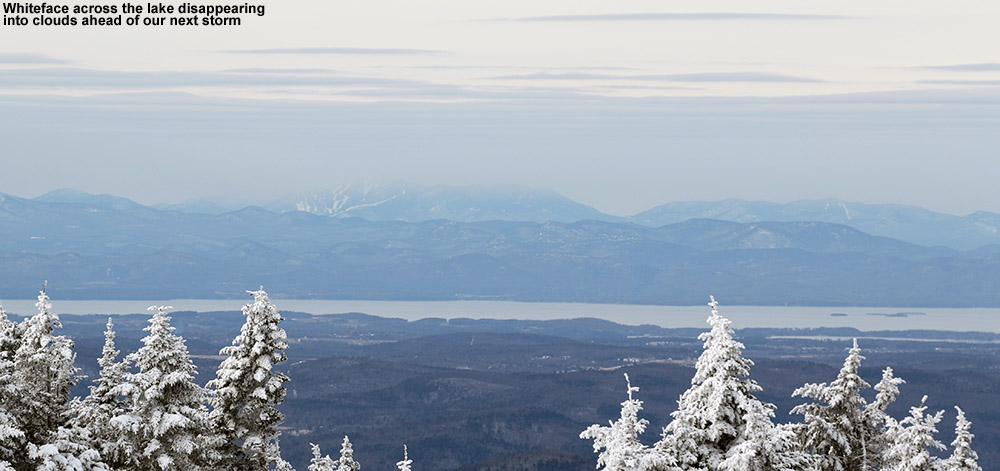
It was definitely worth the trip today for those turns on Show Off though; it made me wonder what the powder turns were like for those hiking at Wilderness or the backcountry network. I suspect sheltered spots at similar elevations are providing some great turns. I stopped in at the Bolton Valley Deli & Grocery and ordered some sandwiches to bring home, and by the time I was heading down the hill the Timberline shuttle bus was running and there were already three rows of cars in the Timberline lot. That’s more great news for the resort considering that they had to be closed for much of the holiday week. We’ve got another storm coming into the area tonight, and we should be in a rather snowy regime right through Wednesday, so I expect we’ll see some improving conditions and additional trails opening. Clouds were already lowering when I was at the mountain when I was out, and by the look of the local radar snow is just about on our doorstep as I write this.

